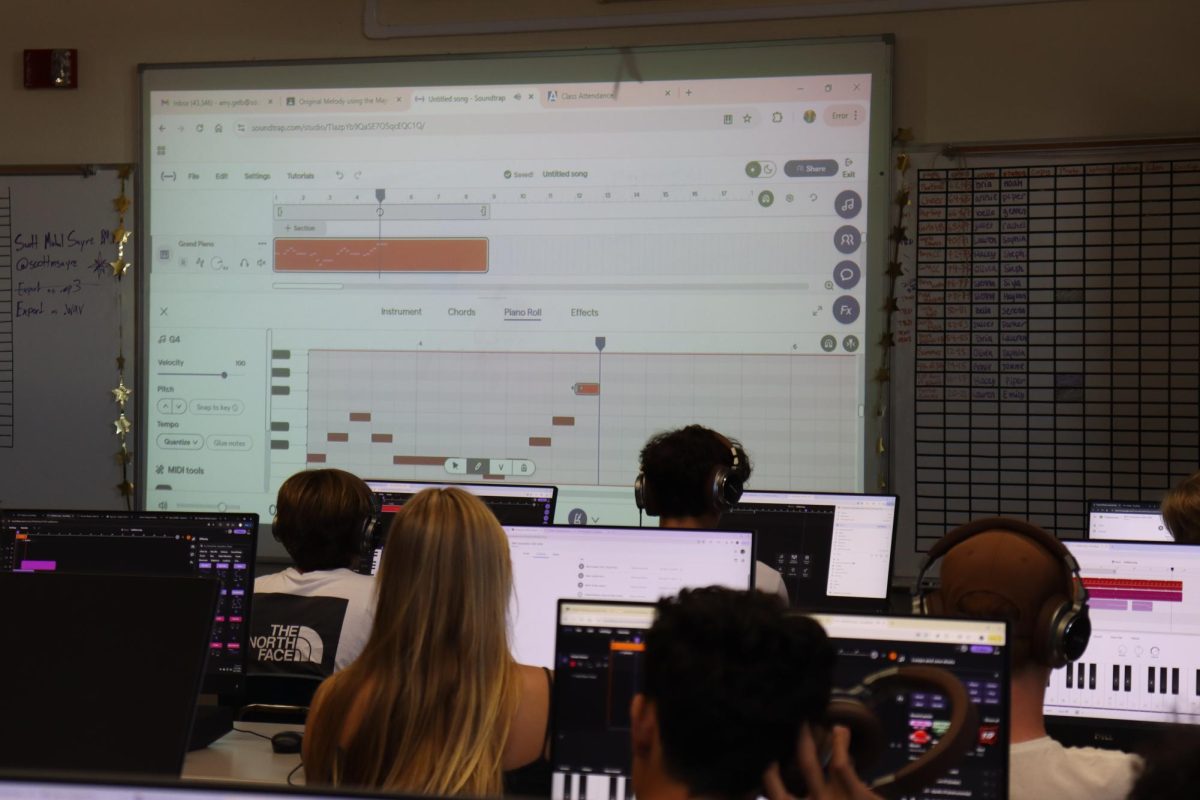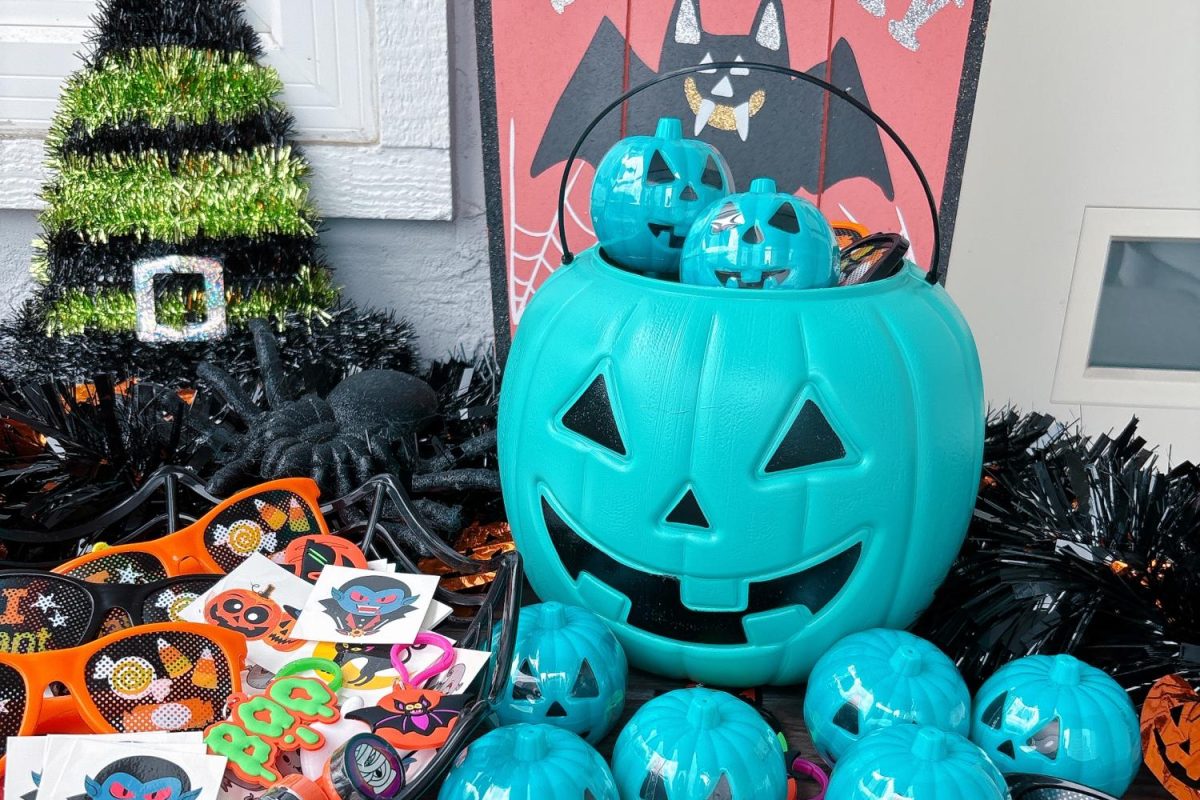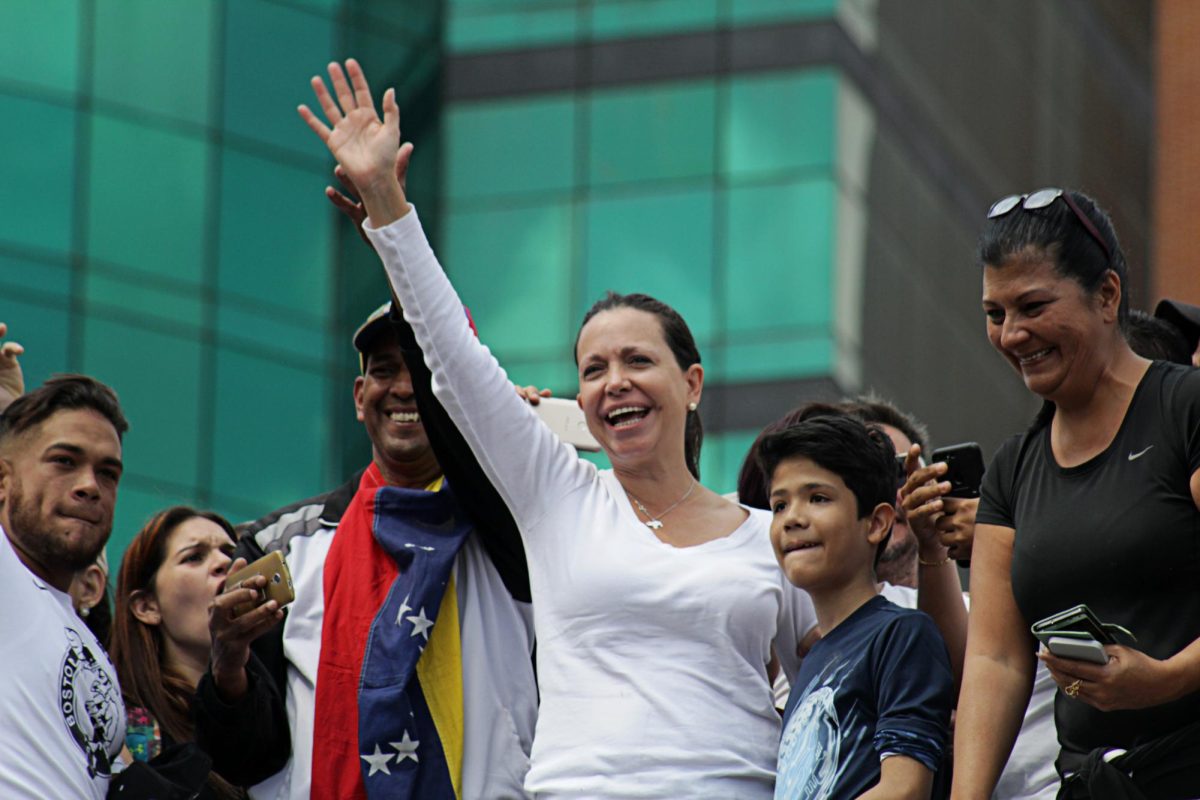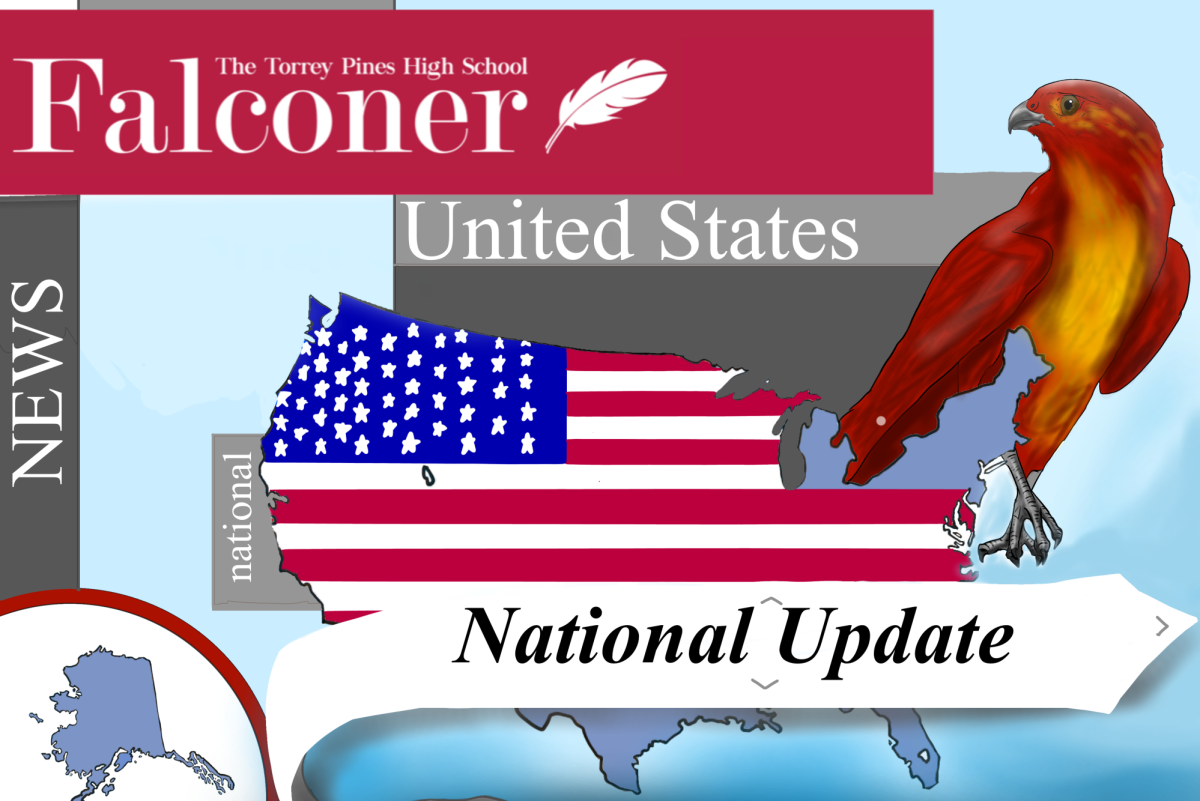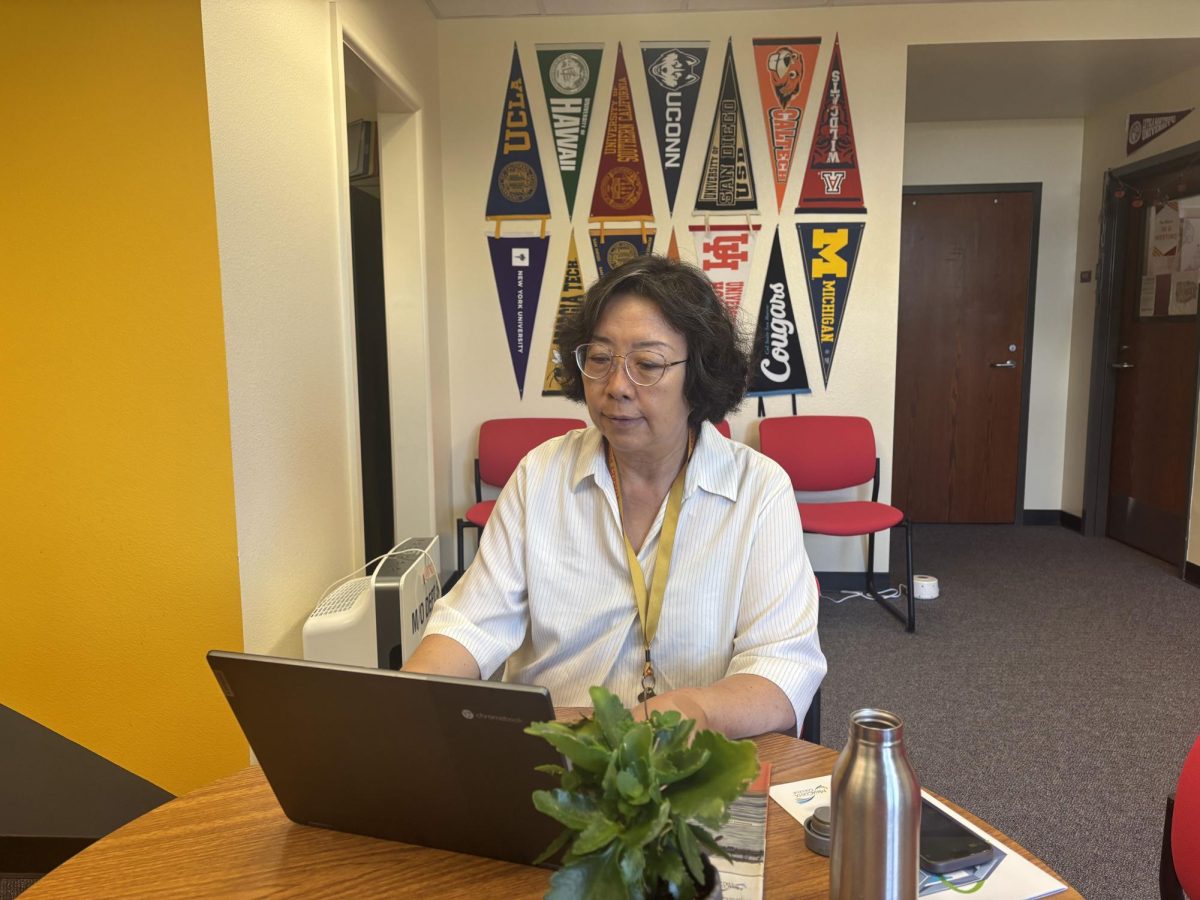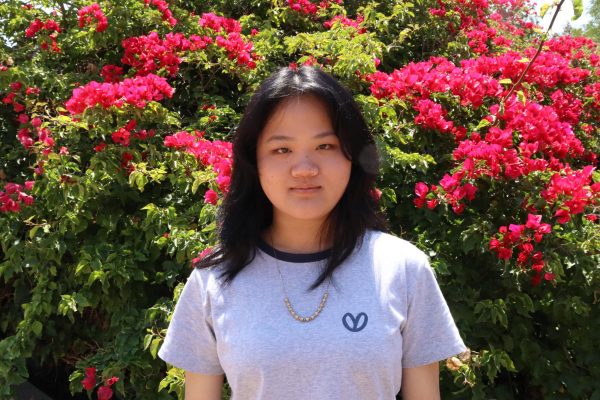The school is offering a new Musical Instrument Digital Interface (MIDI)/Recording Arts course under the Visual and Performing Arts electives, giving students the opportunity to compose and produce music using technology while learning skills relevant to today’s industry.
The course, led by the school’s music director, Amy Gelb, and Artist in Residence Scott Sayre, is already filled to capacity in its first year.
Sayre, who majored in Computer Music Composition at the Peabody Music Conservatory, previously taught digital music composition at Canyon Crest Academy. While he is not present for every class period, he assists Gelb whenever he can to help “the class work more efficiently” and students “get a deeper understanding of what it is they’re doing.”
“This is a class which offers the opportunity to learn how to utilize technology to create music,” Sayre said. “We start out very simple, and we teach you the basics of music in case you’ve never done a music class ever. But, the goal by the end of the class is to know enough of the language of music production to take the stuff you learn in here, and transfer it to whatever music-making software is available to you.”
After teaching the course for two years at San Dieguito Academy, Gelb wanted to bring the same opportunity to this school, advocating for its introduction.
“It’s really cool having it here now,” Gelb said. “And, we’re reaching out to a whole new clientele of students who have an interest in music, but it’s like completely different from the classical instrumental ensemble, and it’s really relevant to what’s happening today in the music world.”
Unlike other music classes like band or orchestra, the MIDI/Recording Arts class does not require prior years of practice or theory.
“You get kids in here who are like complete beginners … but then within weeks they’re already creating their own music, which is absolutely amazing,” Gelb said.
Kolt Sakofsky (9) said that the class gave him access to a topic he wanted to explore.
“I’ve been wanting to pursue something in digital arts and producing for a while, but I haven’t had the means or the technology to do it, and this seemed like a cool class to take,” Sakofsky said.
Sakofsky, who has experience playing piano and guitar, hopes to create his own songs by the end of the course.
Students first learn to use Soundtrap, an online digital audio workstation (DAW), and later Pro Tools, the industry standard for recording software.
Tyler Deleon (9), a member of the Symphonic Band and pianist, took the course to “grow [his] musical thinking.” Despite feeling nervous about the technological aspects of the course, he quickly took an interest in it.
“First impressions when I walked in the classroom [was that] I just saw a keyboard and a really cool control thing,” Deleon said. “And I was like, whoa, this class is probably going to be my favorite throughout my years of high school.”
Two weeks into the school year, students are working on self-guided tutorials.
“The class is so huge, and there is a mixture of kids who have that theory background and kids who don’t,” Gelb said. “So they’d have self-guided lessons, learning major scales, minor scales, chords — what they are, how to build them with programming — and we’ve introduced them to different drum beats and how to create different patterns.”
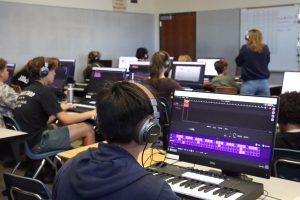
The course also delves into song form and other skills before transitioning to a project-based class model. This makes the course repeatable, as students can continue to add to their portfolios across years. Projects include songwriting, writing film soundtracks and commercials.
Sayre and Gelb see crossovers between this course and other courses offered at the school. For film-related courses, they believe the ability to create original music is an invaluable skill.
“I’ve seen people who were video art producers become music producers and be able to make their own music videos from start to finish, doing all the sound, doing all the visuals, and doing everything all by themselves,” Sayre said.
Gelb also has a lot of MIDI/Recording Arts students who are involved in band or taking the Instrumental Music elective, with a range of skill levels in performance, music theory and digital interfaces.
With music and technology as its two fundamental pillars, the course addresses the relevant intersection and relationship between the two.
“[What] we’re going to talk a lot about, and it’s something that we’re going to hit hard, is being honest about using melodies,” Gelb said. “And one big topic is they take samples of other people’s already created music and drop it into their projects, which is okay unless you’re publishing it … we talk a lot about having the rights to music.”
Sayre’s degree and musical journey gives him a unique perspective on music technology. He wants students to realize, through gained skills and experience, that DAWs allow them to produce music without the assistance of Artificial Intelligence.
“I don’t think that music technology is necessarily an inhibiting factor,” Sayre said. “I think it is an enabling factor. A lot of my colleagues and people that I went to college with would disagree with me because they were all classically trained musicians, and they have certain perspectives on what music should and should not be. But because I’ve been a lover of electronic music my entire life, and still decided to do a classical education, I think that they can actually go hand in hand really well.”
Gelb hopes the MIDI/Recording Arts course will continue to expand, perhaps even with the addition of a second-level class.
“For the beginners, I hope that they create a new outlet, a creative outlet for themselves,” Gelb said. “And then for the more advanced kids, just like honing those skills and learning how they fit into the industry and how they’re valuable.”


